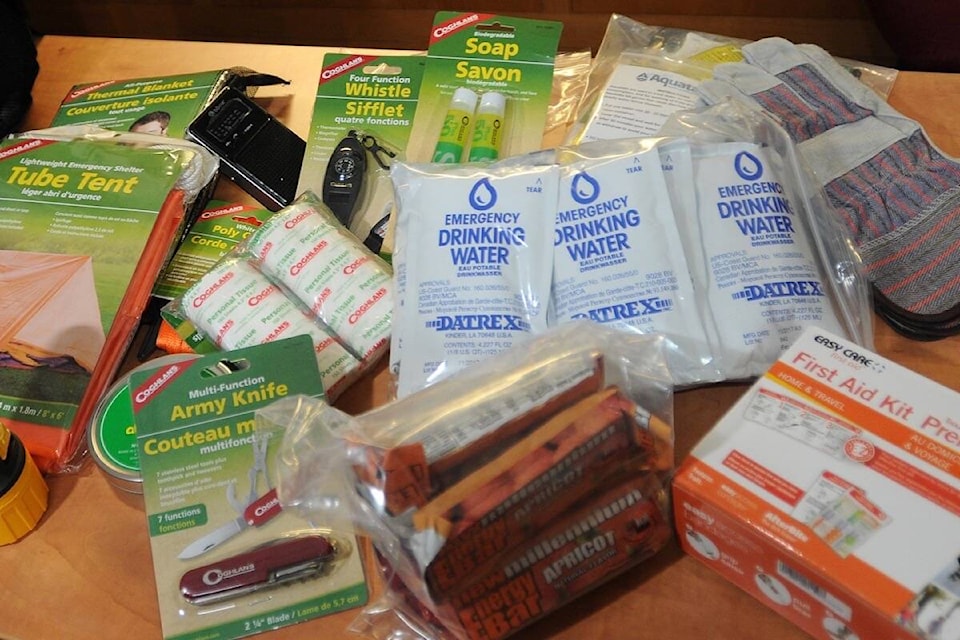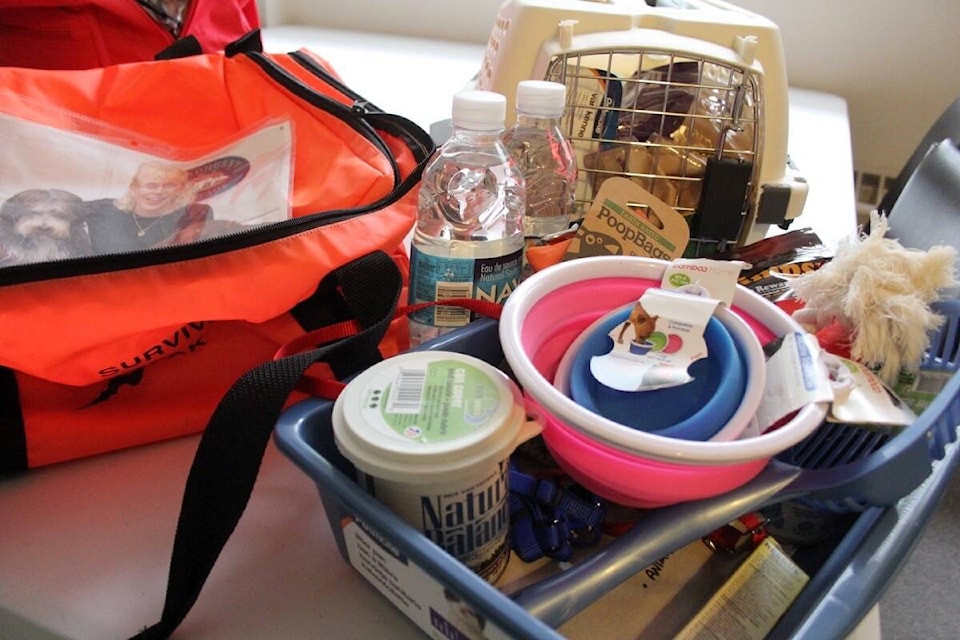The slow ascension to preparedness can start with one can of soup or a roll of toilet paper.
Even though it’s her bread and butter, Erin Stockill – who heads the Saanich Emergency Program – says the learning never ends.
Feeling prepared can be the reward itself.
“We have the luxury of a warning. We know these weather events are coming. Why not make it a priority? It can ease the stress and trepidation when you take ownership of the preparedness in our hands,” Stockill said.
Small routine steps are the easiest. If forewarned of wild weather ahead, keep the cell phone charged and don’t let the vehicles get below a half tank or half charge.
“(They’re) really simple, practical things people can do to take steps toward preparedness,” she said.
With residents facing the first storms of 2024 – wind whipped the coast recently and next up, communities across the province face temperatures shockingly lower than seasonal norms – offer a prime time to start.
A special weather statement in effect says 'a wintry mix of weather is on its way'. Take time to:
— Saanich Emergency Program (@SaanichEP) January 8, 2024
❄️identify a winter weather buddy - check in with each other.
🔦Ensure your emergency kit is stocked - it will come in handy in a power outage.
Learn more: https://t.co/qykv9Y4WqS pic.twitter.com/n0kTnU0M11
Temperatures as low as -9 C are forecast for Greater Victoria starting Thursday (Jan. 11) night. After that, the chance of flurries clears, according to Environment Canada, but the chill remains into next week.
Stockill notes it’s no surprise we’re experiencing more extreme weather on a more regular basis.
“We have really strong emergency programs across the region, across the Island,” Stockill said. “We want to empower residents that they are the experts.”
Online checklists, adaptable plans and suggestions set residents up as the experts in their own emergency preparedness.
A 2018 survey showed time, cost, space and complacency were the biggest barriers, Stockill said. Her goal is to help folks leap those hurdles – and it doesn’t necessarily mean going out to buy a big expensive emergency kit.
“Grab a Rubbermaid bin, walk around your house or apartment, and most people would be surprised to know they have more emergency supplies on hand than they might think,” she said. “Next time you go shopping and soup’s on sale – grab two.”
If space is the issue, slit open the living room ottoman and make it your emergency kit.
“There’s a layer of creativity involved,” she said.
READ ALSO: VIDEO: Storm surge closes Greater Victoria roads, trails, breakwater
Planning starts with that extra can of soup, some bottled water, batteries and other basics, but “no preparedness kit should look the same” because each family unit is unique.
The needs of seniors, infants and any variety of pets are different.
“Things that will cater to the unique needs of your family will ensure the comfort of the needs of your family,” she said.

Ideally every home has an emergency kit – with food, water flashlight, first aid kit, medication and those individualized family needs – to dig into during a power outage. That should cover every member of the household for seven days.
Maybe the next step in the preparedness progression is a grab-and-go bag, something Stockill said became useful to households facing sudden evacuations during wildfires this summer.
That’s the goal of the bag, a personalized kit for each member of the family that will keep them comfy with 24 hours worth of essentials. Those can include water, a snack, pastimes such as book or games, and information such as insurance documents on a protected USB drive.
READ ALSO: Ferries cancelled, thousands without power as storm hits south Island
Moving on the path of readiness, the car and desk kits might be next.
A former West Shore resident, Stockill remembers a light snow turning to a blinding storm she had to stop for once during her commute home. It’s a stark reminder of how quickly conditions can change. A car kit can have extra warm clothes, window scraper, jumper cables, a shovel – things to help wait out a change in the situation.
And don’t forget to revisit those kits. Use a birthday, or routine smoke detector testing or other routine time to revisit those kits. To avoid snacking on a five-year-old power bar when in a dire situation, replace and replenish things like snacks and batteries.
Below-zero temperatures are expected in some parts of the region over the coming days. Be prepared for winter conditions in #crdParks and on regional trails. Cycling commuters without winter bike tires may consider alternative transportation if winter conditions are present. #yyj pic.twitter.com/Plh1aXrWNG
— CRD (@crd_bc) January 10, 2024
While the steps are small and can add up incrementally, key elements to preparedness and resilience are free.
A walk around outdoors and a home hazard hunt can avoid potential problems – for example, draining taps ahead of a deep freeze or securing stuff ahead of a wind storm.
And while you’re out there, knock on the neighbour’s door. When facing extreme heat or cold, snow, flooding or fire your friends could be next door.
“The reality is neighbours will be our first help, let’s help each other,” Stockill said. “It doesn’t cost anything to knock on the door, introduce yourself and maybe find out how you can help them.”
Stockill runs the emergency program through Saanich fire (online at saanich.ca), but most communities offer programs.
“We love helping people take those steps toward preparedness and resilience.”
Find a guide to emergency preparedness in the Capital Region online at crd.bc.ca/prepare-yourself.



